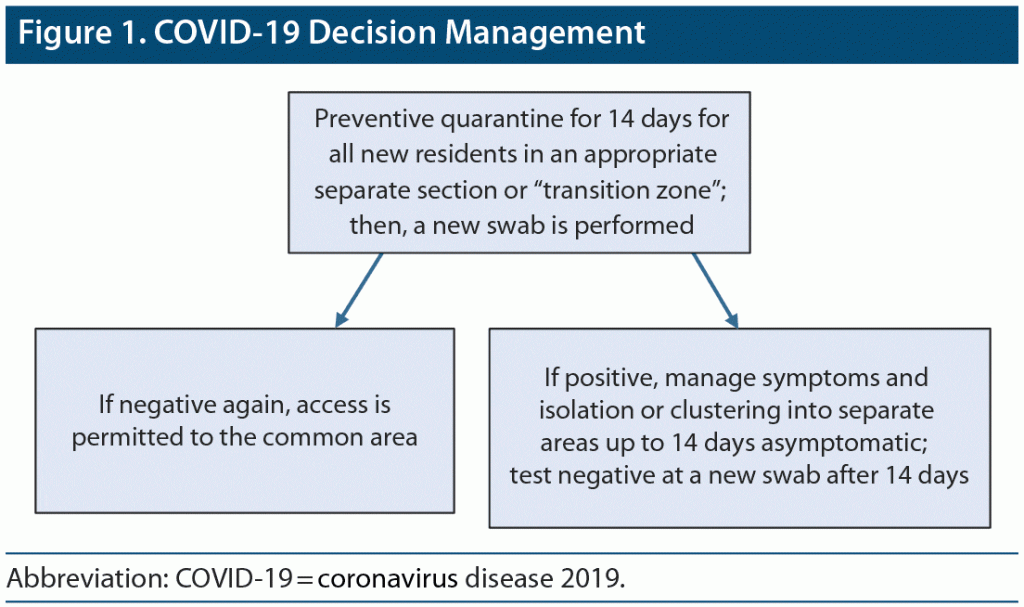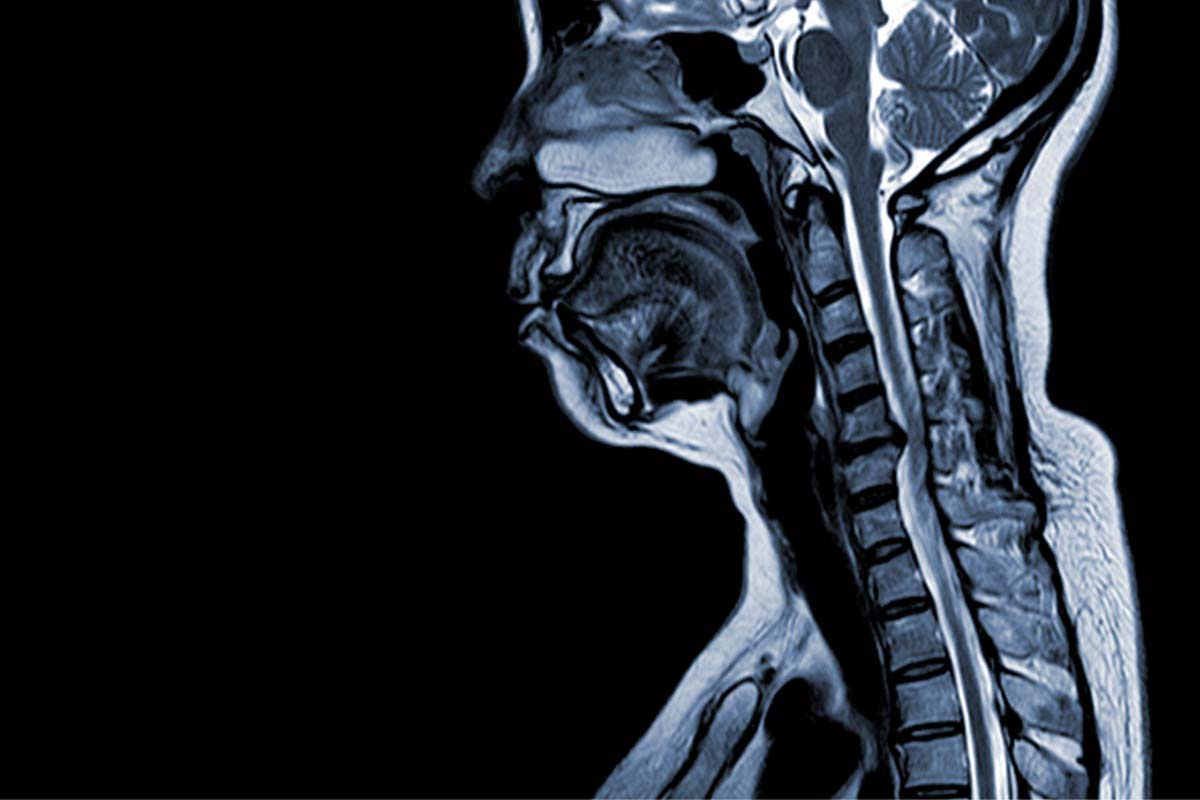
Prim Care Companion CNS Disord 2021;23(5):21br03005
To cite: Nava R, Zanvit FG, Wisidagamage Don P, et al. Prevention plan for COVID-19 in a psychiatric long-term care rehabilitation facility: an Italian experience. Prim Care Companion CNS Disord. 2021;23(5):21br03005.
To share: https://doi.org/10.4088/PCC.21br03005
© Copyright 2021 Physicians Postgraduate Press, Inc.
aDepartment of Mental Health and Addiction, Health Care Trust, ASST Monza, Monza, Italy
bSchool of Medicine and Surgery, University of Milano-Bicocca, Milan, Italy
*Corresponding author: Roberto Nava, MD, Department of Mental Health and Addiction, Health Care Trust, ASST Monza, Monza, via Pergolesi 33, 20900 Monza (MB), Italy ([email protected]).
We read with interest the article by Xiong and colleagues1 regarding coronavirus disease 2019 (COVID-19) transmission in psychiatric long-term care rehabilitation facilities in the United States. Despite the public relevance of this issue, we have found no further studies reporting on the ongoing situation of COVID-19 infection in long-term care mental health settings.
On the other hand, several studies2–6 have been conducted about COVID-19 in nursing facilities worldwide. In Italy, nursing facilities have been affected by a high rate of infection and death because of the fragile clinical condition and advanced age of inpatients. According to data from Johns Hopkins University, total COVID-19 cases in Lombardy (Northern Italy) up to the end of January 2021 amounted to 548,000, including 27,395 deaths.7
As a result, these studies2–6 led to the drafting of several guidelines (written in 2020) regarding prevention of infectious outbreaks in facilities,8–13 as summarized in the following points:
- Residents
- Use of personal protective equipment (PPE)
- Daily symptom monitoring
- Diagnostic tests for COVID-19 detection before joining the facility
- Preventive quarantine after joining the facility
- If positive, isolation into restricted areas until 14 days without symptoms and a negative test
- Seasonal flu vaccination
- Visitors
- Only strictly necessary visits allowed, observing distance, using PPE, and monitoring symptoms
- Health care staff
- Use of PPE
- Daily symptom monitoring
- No access to the facility if clinically suggestive of COVID-19 or have been in contact with a positive individual without PPE
- Prohibition of working in other facilities
- Sanitization of environments
Methods
In a psychiatric long-term care rehabilitation facility in Monza (Northern Italy), we drew up the following protocol to prevent and minimize severe acute respiratory syndrome coronavirus 2 infection risk.
From February 2020 to February 2021, we hosted 35 psychiatric inpatient residents. As of this writing in February 2021, all of the residents have been given the first dose of the COVID-19 vaccine. And so, awaiting the beginning of the vaccination campaign, we have been adopting these sanitary measures since February 2020, which are still in effect:
- Residents
- Use of PPE: mandatory use of surgical masks at all times in common areas
- Daily symptom monitoring
- Respect of social distancing, maintaining at least 1 m distance and avoiding gatherings
- Molecular nasopharyngeal swab for applicant inpatients performed by the ordering physician and admission allowed only upon negative result; if tested positive, the patient would be reevaluated for admission after the illness and negative result at new testing
- Temporary suspension of exit permits
- Random swab testing of all the residents for surveillance purposes in a 2-month period to document the effectiveness of the preventive protocol in use (we have found no specific guidelines for the periodic screening in the literature, nor were they provided by the Italian Ministry of Health until May 2021, after the end of our experience)
- Swab testing at any time if clinical suggestive symptoms occurred
- Temporary suspension of rehabilitation activities outside the facility itself (eg, theater, gardening, equitation) and respect of social distancing during indoor activities
- COVID-19 decision management as shown in Figure 1
- Visitors
- Visitors allowed after a strict triage with monitoring of symptoms (body temperature, cough, dyspnea), only in dedicated areas observing distance and using surgical masks
- Measures regarding facility reorganization and health care personnel
- Reduction to 85% of the facility capacity (from 30 to 25 beds)
- Definition of separate zones of risks: transition zone, isolation zone, and common area
- Designation of a COVID-19 plan manager
- Use of PPE: KN95/FFP2 face masks at all times
- Daily symptom monitoring
- Respect of social distancing (at least 1 m) among staff and between residents and staff
- Mandatory swab for personnel with suggestive symptoms or close contact with suspect/confirmed COVID-19 subject without PPE
- Environmental cleaning and disinfection
Results
In the time span of the study (February 2020 to February 2021), none of the subjects (neither the residents nor the staff) developed COVID-19 inside our facility. None of the patients tested positive after the 14-day quarantine in the transition zone or developed symptoms afterward warranting swab testing and/or the use of the isolation zone.
Discussion
The method with which we conducted our COVID-19 infection prevention plan proves its own efficacy since no cases occurred in our psychiatric facility. The standards we drafted were consistent with the international guidelines applied to nursing homes, confirming their safety, efficacy, and practicality. Moreover, awaiting the beginning of the vaccination campaign, the adoption of these measures prevented the outbreak of other infectious diseases, such as the seasonal flu or flu-like infections.
Furthermore, considering the burden caused by the COVID-19 pandemic on psychological health, we provided psychoeducational interventions for both residents and staff to manage emotional distress and anxiety and to prevent maladaptive behaviors and burnout reactions. In addition, despite the understandable limitations due to the adopted measures, no substantial variation of each individual rehabilitation program occurred. The proper functioning of the facility, in terms of “social life” and success of educational interventions, was made possible by the strict enforcement of the measures described here, allowing us to avoid strict, harmful social isolation of the residents and achieving instead a “virtuous bubble.” This analysis may provide important insights on how to prevent, control, and mitigate future pandemics within psychiatric long-term care rehabilitation facilities.
Received: May 3, 2021.
Published online: September 16, 2021.
Author contributions: All authors approved the final manuscript and contributed equally.
Potential conflicts of interest: None.
Funding/support: None.
References (23)

- Xiong GL, Atkin A, Moquin K, et al. COVID-19 transmission in a psychiatric long-term care rehabilitation facility: an observational study. Prim Care Companion CNS Disord. 2020;22(6):20m02765. CrossRef
- McMichael TM, Currie DW, Clark S, et al; Public Health–Seattle and King County, EvergreenHealth, and CDC COVID-19 Investigation Team. Epidemiology of COVID-19 in a long-term care facility in King County, Washington. N Engl J Med. 2020;382(21):2005–2011. PubMed CrossRef
- Arons MM, Hatfield KM, Reddy SC, et al; Public Health–Seattle and King County and CDC COVID-19 Investigation Team. Presymptomatic SARS-CoV-2 infections and transmission in a skilled nursing facility. N Engl J Med. 2020;382(22):2081–2090. PubMed CrossRef
- Thompson DC, Barbu MG, Beiu C, et al. The impact of COVID-19 pandemic on long-term care facilities worldwide: an overview on international issues. BioMed Res Int. 2020;2020:8870249. PubMed CrossRef
- Trabucchi M, De Leo D. Nursing homes or besieged castles: COVID-19 in northern Italy. Lancet Psychiatry. 2020;7(5):387–388. PubMed CrossRef
- Graham NSN, Junghans C, Downes R, et al. SARS-CoV-2 infection, clinical features and outcome of COVID-19 in United Kingdom nursing homes. J Infect. 2020;81(3):411–419. PubMed CrossRef
- Dong E, Du H, Gardner L. An interactive web-based dashboard to track COVID-19 in real time. Lancet Infect Dis. 2020;20(5):533–534. PubMed CrossRef
- D’Adamo H, Yoshikawa T, Ouslander JG. Coronavirus disease 2019 in geriatrics and long-term care: the ABCDs of COVID-19. J Am Geriatr Soc. 2020;68(5):912–917. PubMed CrossRef
- González de Villaumbrosia C, Martínez Peromingo J, Ortiz Imedio J, et al. Implementation of an algorithm of cohort classification to prevent the spread of COVID-19 in nursing homes. J Am Med Dir Assoc. 2020;21(12):1811–1814. PubMed CrossRef
- Dosa D, Jump RLP, LaPlante K, et al. Long-term care facilities and the coronavirus epidemic: practical guidelines for a population at highest risk. J Am Med Dir Assoc. 2020;21(5):569–571. PubMed CrossRef
- McGarry BE, Grabowski DC, Barnett ML. severe staffing and personal protective equipment shortages faced by nursing homes during the COVID-19 pandemic. Health Aff (Millwood). 2020;39(10):1812–1821. PubMed CrossRef
- Blain H, Rolland Y, Schols JMGA, et al. August 2020 interim EuGMS guidance to prepare European long-term care facilities for COVID-19. Eur Geriatr Med. 2020;11(6):899–913. PubMed CrossRef
- Yen MY, Schwartz J, King CC, et al; Society of Taiwan Long-term Care Infection Prevention and Control. Recommendations for protecting against and mitigating the COVID-19 pandemic in long-term care facilities. J Microbiol Immunol Infect. 2020;53(3):447–453. PubMed CrossRef
- Peet M, Harvey NS. Lithium maintenance, 1: a standard education programme for patients. Br J Psychiatry. 1991;158(2):197–200. PubMed CrossRef
- Scott J, Pope M. Nonadherence with mood stabilizers: prevalence and predictors. J Clin Psychiatry. 2002;63(5):384–390. PubMed CrossRef
- Sheehan DV, Lecubier Y, Sheehan KH, et al. The Mini-International Neuropsychiatric Interview (MINI): the development and validation of a structured diagnostic psychiatric interview for DSM-IV and ICD-10. J Clin Psychiatry. 1998;59(suppl 20):22–33, quiz 34–57. PubMed
- Overall JA, Gorham DR. The Brief Psychiatric Rating Scale. Psychol Rep. 1962;10(3):799–812. CrossRef
- Muneer A. The treatment of adult bipolar disorder with aripiprazole: a systematic review. Cureus. 2016;8(4):e562. PubMed CrossRef
- Torres-Llenza V, Lakshmin P, Lieberman DZ. Spotlight on once-monthly long-acting injectable aripiprazole and its potential as maintenance treatment for bipolar I disorder in adult patients. Neuropsychiatr Dis Treat. 2018;14:285–292. PubMed CrossRef
- Yan T, Greene M, Chang E, et al. Medication adherence and discontinuation of aripiprazole once-monthly 400 mg (AOM 400) versus oral antipsychotics in patients with schizophrenia or bipolar i disorder: a real-world study using US claims data. Adv Ther. 2018;35(10):1612–1625. PubMed CrossRef
- Bauer MS. Supporting collaborative practice management: The Life Goals Program. In: Johnson SL, Leahy R, eds. Psychological Treatment of Bipolar Disorder. New York: Guilford Press; 2004:203–225.
- Bauer MS, McBride L, Williford WO, et al; Cooperative Studies Program 430 Study Team. Collaborative care for bipolar disorder, part I: intervention and implementation in a randomized effectiveness trial. Psychiatr Serv. 2006a;57(7):927–936. PubMed CrossRef
- Bauer MS, McBride L, Williford WO, et al; Cooperative Studies Program 430 Study Team. Collaborative care for bipolar disorder, part II: impact on clinical outcome, function, and costs. Psychiatr Serv. 2006b;57(7):937–945. PubMed CrossRef
Please sign in or purchase this PDF for $40.
Save
Cite




